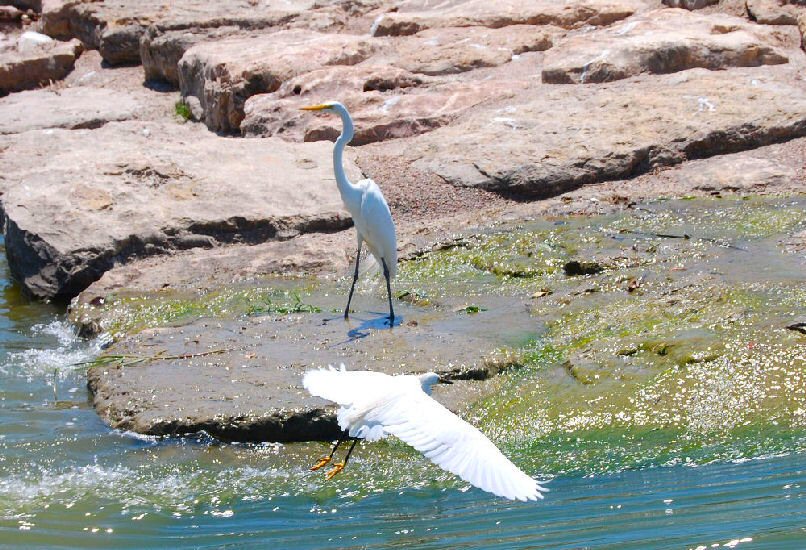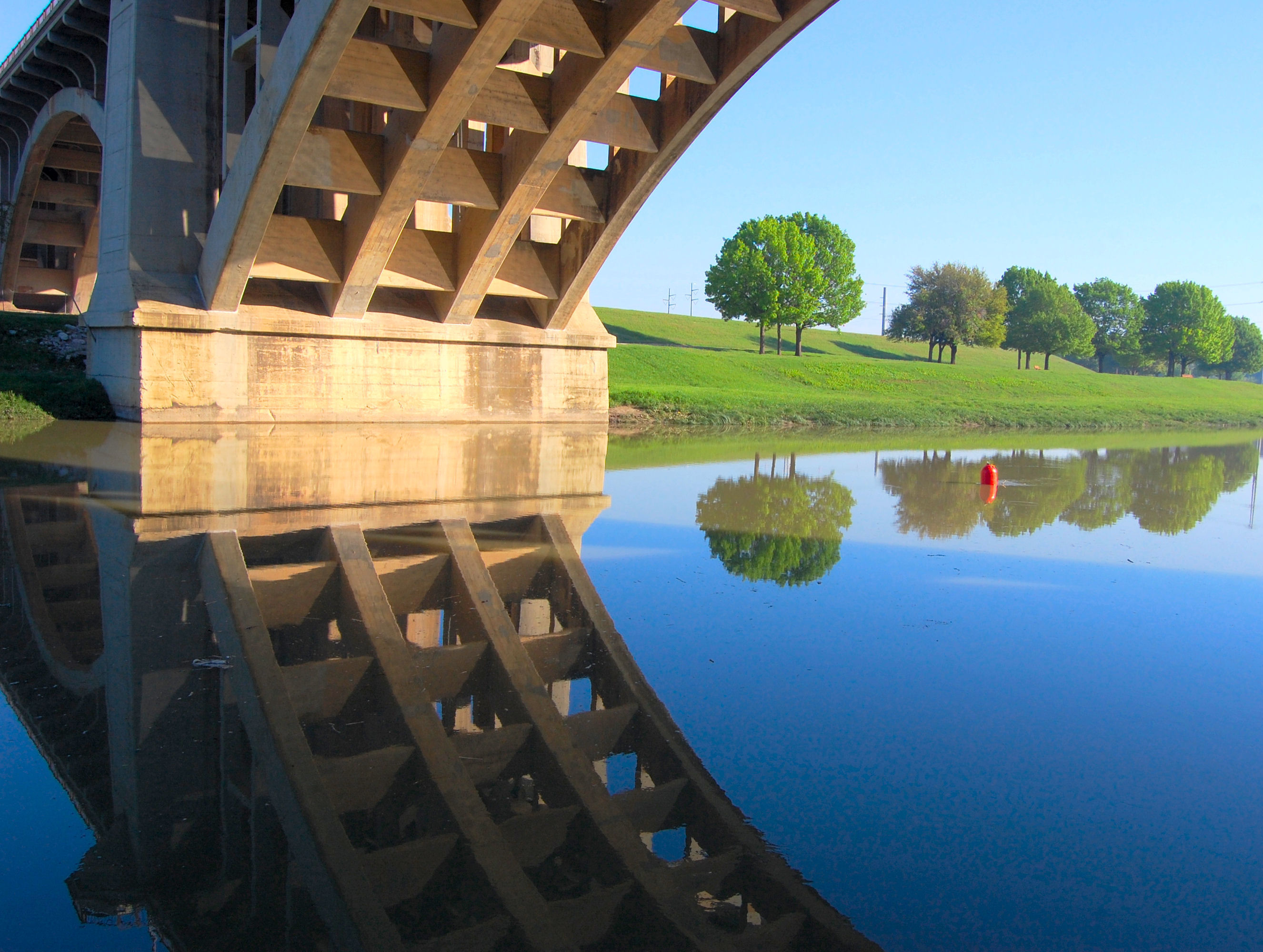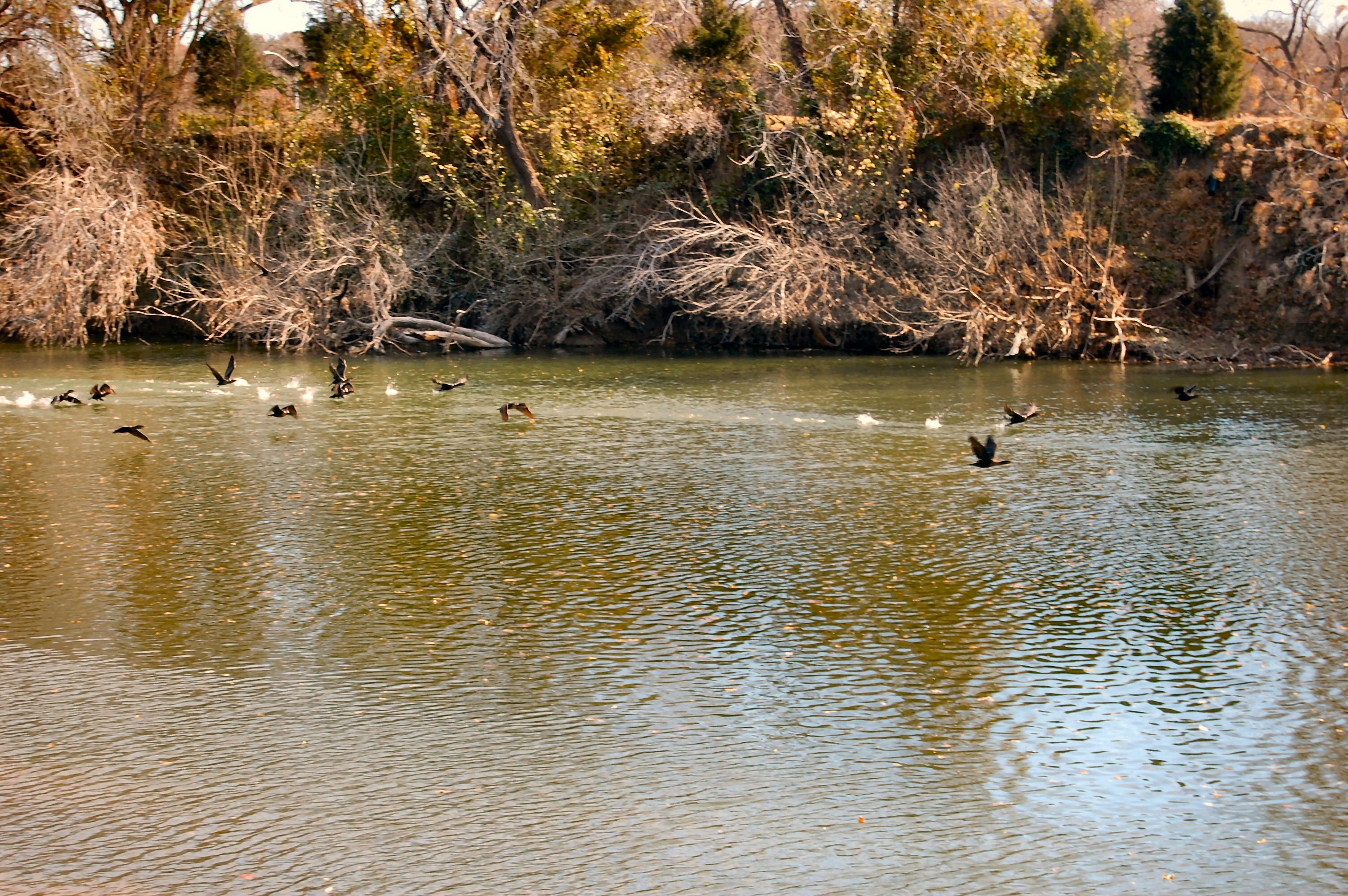I went down to the river early,

just as the herons had been cleared for takeoff and dragonflies were still weaving over the water, zigging and zagging in their low-level do-si-do. More than three hundred years ago, in 1690, did Spanish explorer Alonso de Leon see a similar scene downstream when he saw the river for the first time? He was searching for La Salle’s Fort St. Louis when he came upon the river two days before the Catholic holy day Feast of the Most Holy Trinity. So he named the river “La Santisima de la Trinidad.”

Almost 160 years later the river was a big factor in the Army’s selection of the site to establish Fort Worth. Ever since then, because the city grew up on both sides of the river—the rich on its bluffs, the poor on its bottoms, the rest of us in between—the river has been something that we always seem to want to get to the other side of. To get horses, wagons, pedestrians, cars, and trains over it we have bridged it using wood, stone, cable, steel, and concrete—from the venerable Paddock Viaduct (1914) . . .

. . . to crossings that are crossable only in low water.
From the beginning the Trinity has provided the city with water. But except where we’ve dammed it for lakes, we rarely interact with the river, seldom for recreation, even less for transportation. Most of us live our daily lives largely unaware of it. It’s just there, part of the furniture of our hometown, like a chair no one sits in. But there have been times when the Trinity has become the elephant in the room, such as when it flooded five times in sixty years (1889, 1900, 1908, 1922, 1949).
After the 1949 flood, the Corps of Engineers uncurled some kinks in the river, and the river’s manners improved considerably. These days the Trinity mostly just keeps lakes wet and poses for photos. The right-of-way that it provides for the Trinity Trails bike-and-hike path is scenic because, even after the Corps makeover, the river seldom travels the shortest distance between two points. For example, the distance from the confluence of the Clear and West forks near the courthouse to the confluence of the Elm Fork in Irving is twenty-five miles as the crow flies but fifty miles as the Trinity moseys.

In places the river can be wide and opaque and deep enough to swallow a car in one bite.

In other places, where the river skims over an ancient bed of limestone, the water is clear and can be so shallow that you can lie on your back in the middle of the river and not get nose or toes wet (kids, wait until you’re about sixty to try this so you don’t get a whippin’ when you get back home).






Beautiful photos.
Thanks, Doohickie. As you know, the river can be very photogenic.
I’m loving your photos and narrative. I just wish you would use a larger font for the print so as to cause less strain on my aging eyeballs. Thanks.
Hey, I figured out how to bump up the font. Thanks for motivating me to do that.